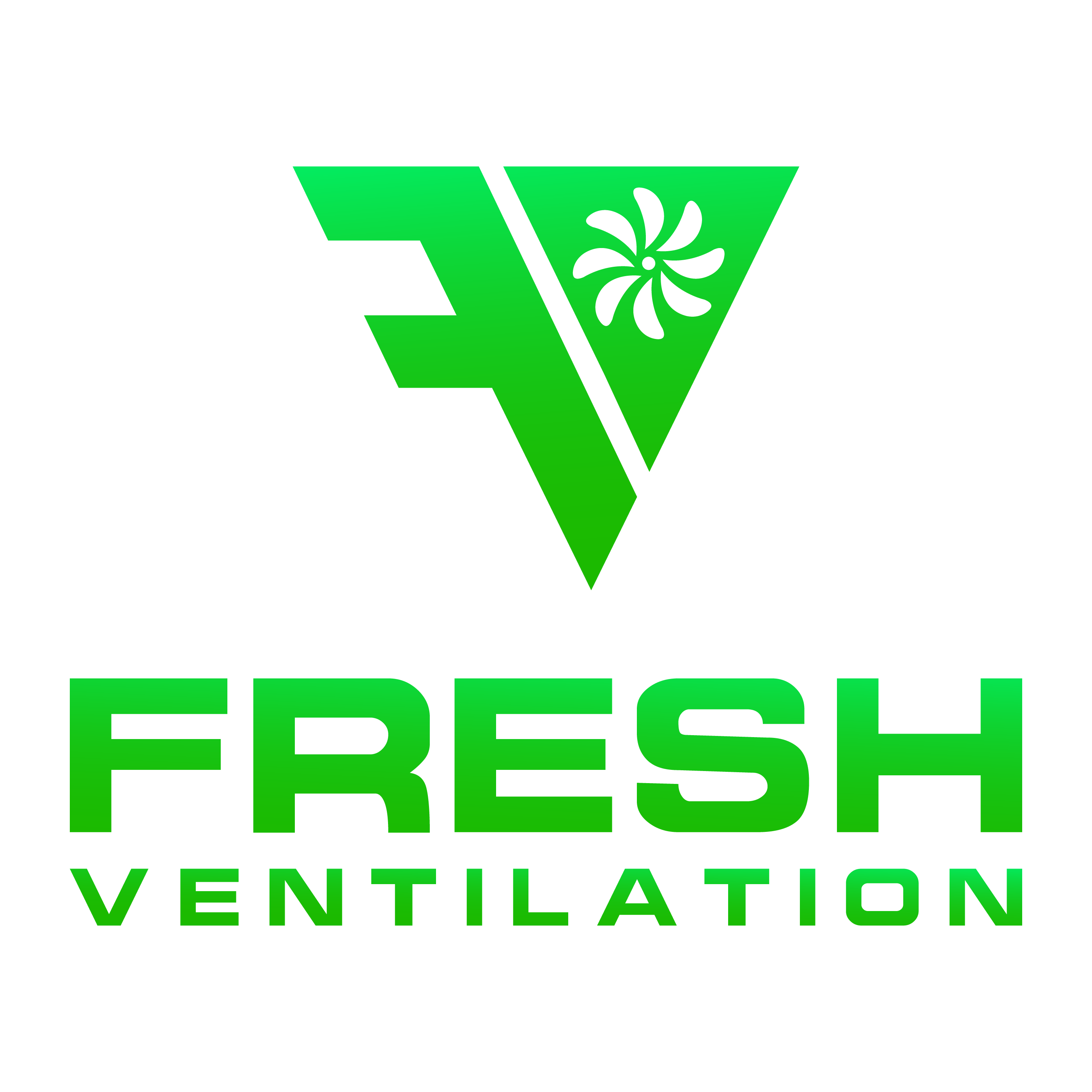Home Ventilation Guide
What is Ventilation?
Ventilation is the intentional introduction of outdoor air into a space. Ventilation is mainly used to control indoor air quality by diluting and displacing indoor pollutants. It can also be used to control indoor temperature, humidity, and air motion to benefit thermal comfort, satisfaction with other aspects of the indoor environment, or other objectives.
Mechanical ventilation is the intentional fan-driven flow of outdoor air into and/or out from a building. Mechanical ventilation systems may include supply fans (which push outdoor air into a building - positive pressure), exhaust fans (which draw air out of a building and thereby cause equal ventilation flow into a building - negative pressure), or a combination of both (called balanced ventilation if it neither pressurises nor depressurises the inside air - balanced pressure).
Home ventilation systems that continuously ventilate the occupied space within a home should either be positive pressure systems or balanced pressure systems. This is because incoming air can be filtered to remove dust, pollens, allergens, mould spores, VOCs, smoke, diesel fumes, and other pollutants. Negative pressure systems should only be used for specific targeted extraction, such as in bathrooms and laundries, where powerful moisture extraction is needed for brief periods of time. Negative pressure systems cause unfiltered ventilation flow into a building to replace the extracted air, bringing with it dust, pollens, allergens, mould spores, VOCs, smoke, diesel fumes, and other pollutants in the air outside.

Types of Home Ventilation Systems
Home ventilation systems come in one of two broad categories, centralised or decentralised. Whether designing your perfect climate from scratch or upgrading your existing with a renovation or retrofit, it helps to determine whether you need a centralised or decentralised unit.
Centralised Ventilation
Centralised ventilation systems excel at whole house ventilation. Reaching out from one centralised unit, a series of ducting supplies and/or extracts air from all rooms and spaces in the home. Some centralised units, such as the DVS products, can be installed in the roof space outside the thermal envelope, while others, such as the STIEBEL ELTRON and Zehnder products, must be installed inside the thermal envelope and are generally installed on a wall inside the home.
They connect to your various spaces via ducts and ventilation grilles. These ducts need to be in tip-top shape to preserve energy consumption in the system, one leaking duct can make the whole system inefficient. Centralised units generally have more features, more overall heat recovery and a stronger ventilation capability.
The requirement for ducting to be run to the majority of rooms within a home makes retrofitting these systems inside the thermal envelope often impossible. Centralised systems for high performance homes that require installation inside the thermal envelope are usually allowed for at the time of building. In contrast, systems that can be installed outside the thermal envelope can be easily retrofitted provided you have a roof cavity (or sub floor) with space for the unit and ducting to be housed. Ducting space should be considered when deciding if whole house centralised ventilation is for you and your renovation.
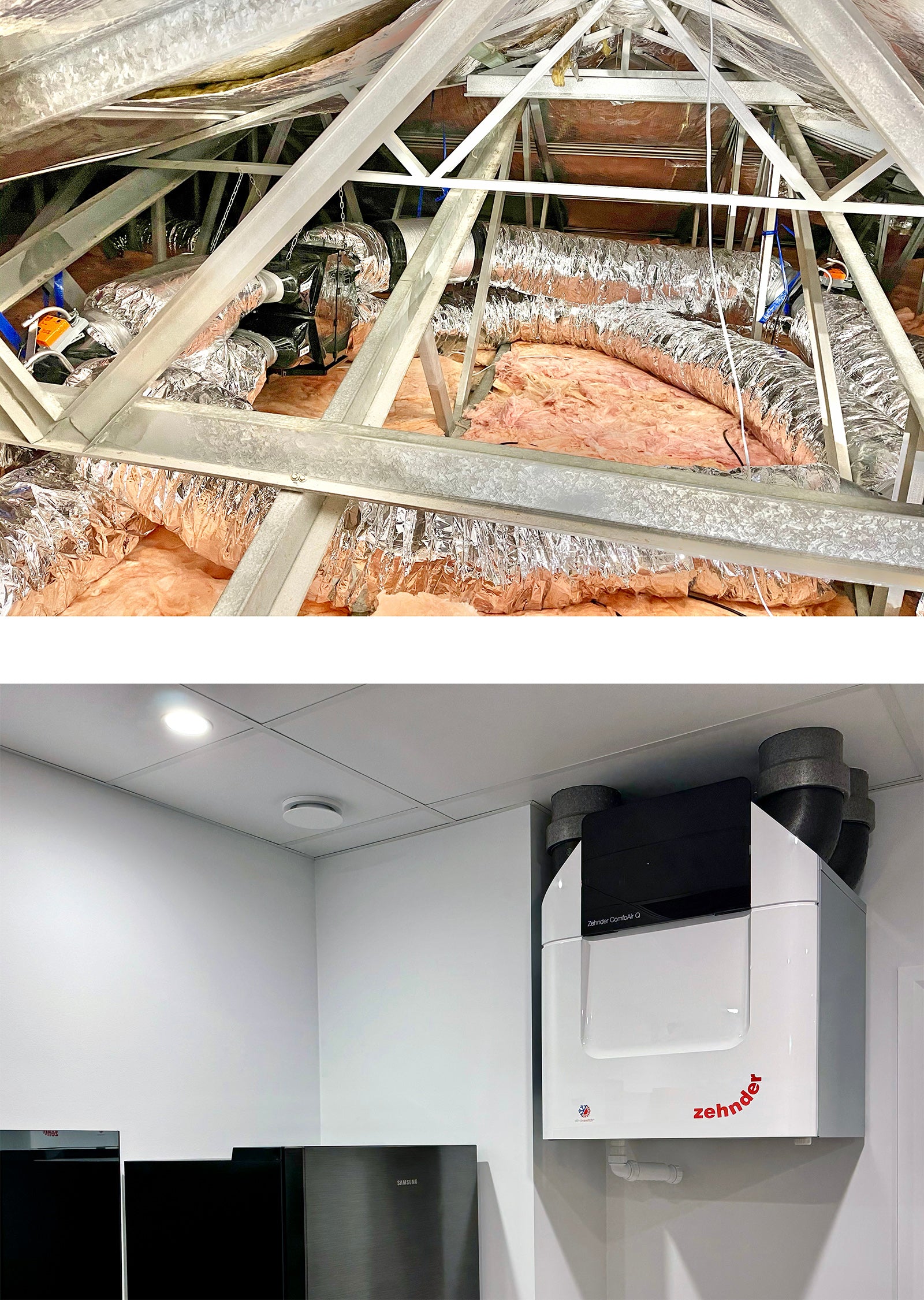
Decentralised Ventilation
Decentralised ventilation consists of multiple smaller ventilation units that are installed in targeted locations throughout a home. Larger decentralised products, such as the LUNOS Nexxt-E, are an all-in-one unit containing a counterflow enthalpy heat exchanger and offer full-time balanced ventilation. Smaller decentralised products, such as the LUNOS e²60 and STIEBEL ELTRON VLR 70 S, are typically installed in pairs because one unit will extract the dirty or stale air while the other will be tasked with supplying fresh air. The two units tango this task, dancing for about 30 seconds one way then they swap exchanging functions. Co-ordination of this ensemble is controlled with a single controller to make the arrangement user friendly and efficient.
Decentralised ventilation is perfect for apartments and spaces with limited access. It is also popular for renovation or retrofit as there’s no need to run ducting. This aspect makes decentralised ventilation an excellent solution to solve immediate room-specific problems such as mould or condensation issues in a bedroom or living area. Decentralised units can be easily fitted without any real structural modifications — a simple hole in the wall install — solving immediate climate issues.
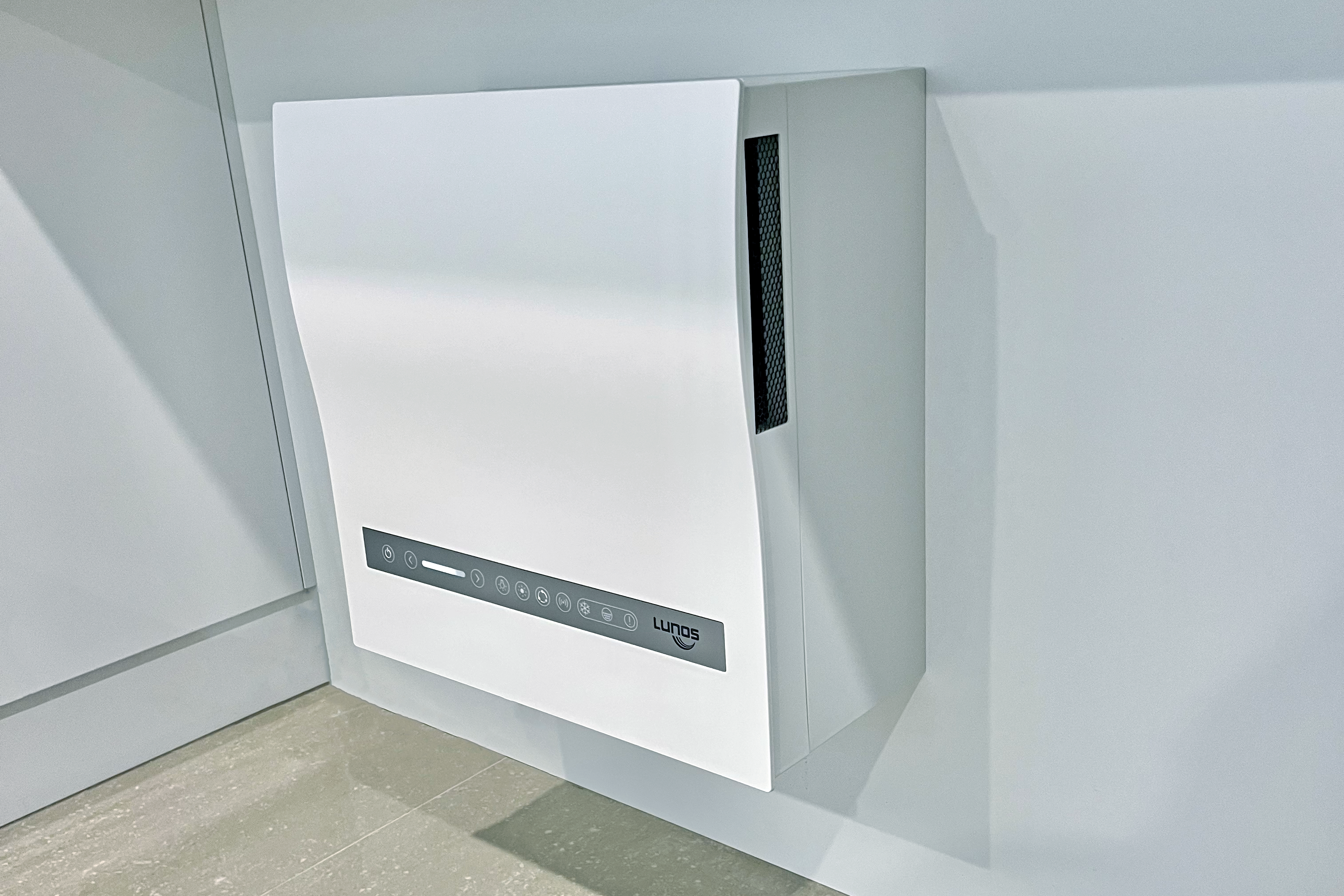
Our Products

Positive Pressure Home Ventilation Systems
Suggested System:
Key Features:
- Centralised whole home ventilation using 200mm diameter uninsulated flexible duct.
- Installed outside the thermal envelope.
- Easily retrofittable.
- Positive pressure with "heat recovery" using free warm air from your roof space on sunny days.
- MERV15 natural wool with carbon filtration.
- It delivers fresh, dry, filtered air from your roof space to your home.
- Adapts to the ambient temperature. If the supplied air temperature is warmer than your home, fan speed will be increased so that free warmth will be transferred into your living areas up to your desired temperature.
- The most affordable option in our centralised whole home ventilation products, while still delivering class-leading performance and innovation.
Ideal Installation:
- Requires a dry and breathable roof space.
- Old and new homes built to a typical Australian standard.
- Old homes that are poorly insulated, draughty, and cold and/or damp.
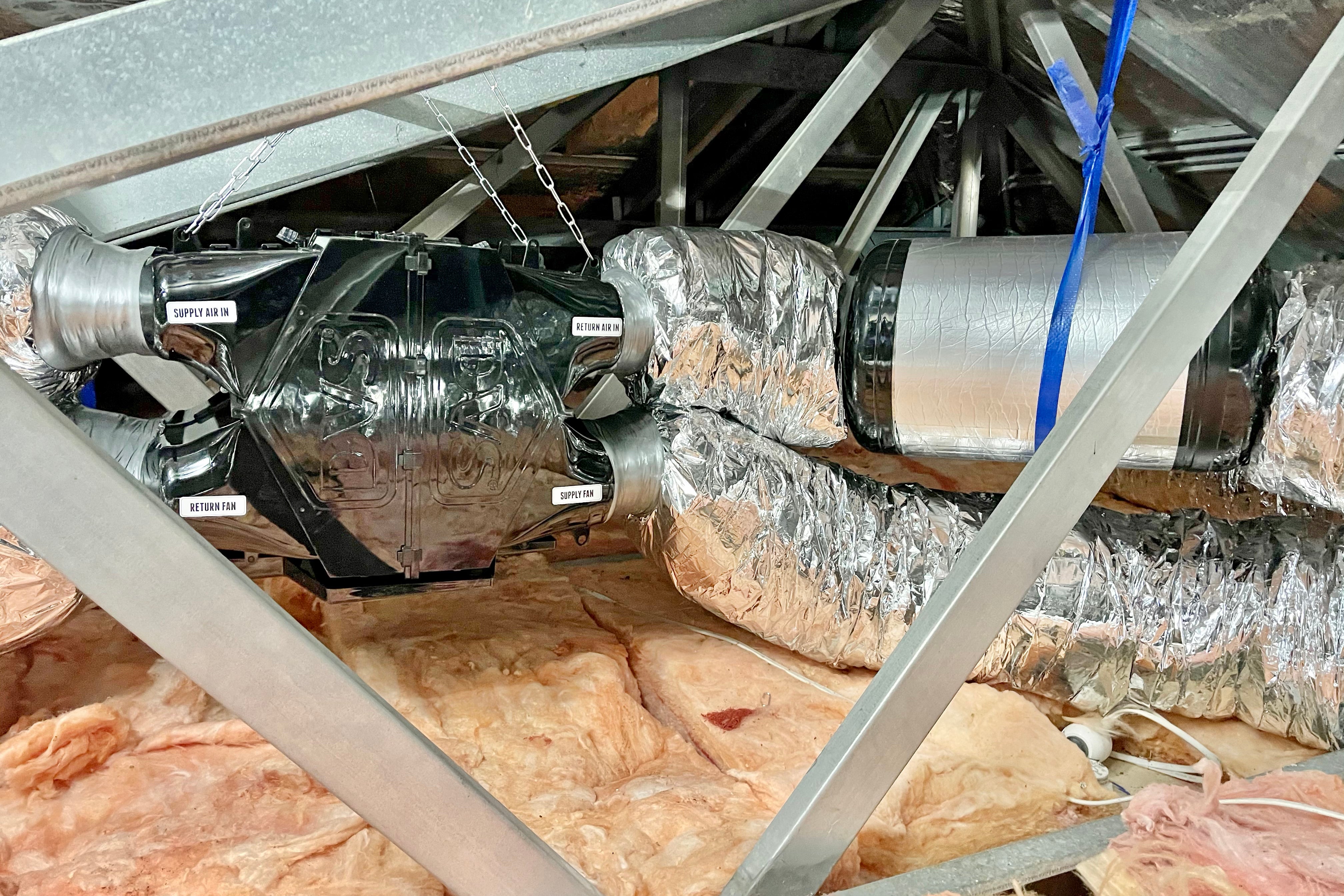
Balanced Pressure Heat Recovery Ventilation Systems (HRV)
Suggested System:
Key Features:
- Centralised whole home ventilation using 200mm diameter insulated flexible duct.
- Can be installed outside the thermal envelope.
- Easily retrofittable.
- Balanced pressure with heat recovery using a counterflow HRV/ERV core.
- MERV15 natural wool with carbon filtration.
- Always ducted directly outside.
- HRV core works especially well in cold climates.
- ERV core available for hot and humid climates.
- Modular components comprising of 2 fans (one for supply and one for exhaust), insulated duct, 2 inline filter tubes, and a heat recovery core.
- The heat exchanger reclaims energy produced by the exhausted stale air, and redistributes it into your home with up to 98% efficiency.
Ideal Installation:
- Suitable for any home with an accessible roof space.
- Can be installed in a subfloor using floor vents.
- Old and new homes built to a typical Australian standard.
- Old homes that are poorly insulated, draughty, and cold and/or damp.
- New homes built to an above-average standard.
- Air-tight homes.
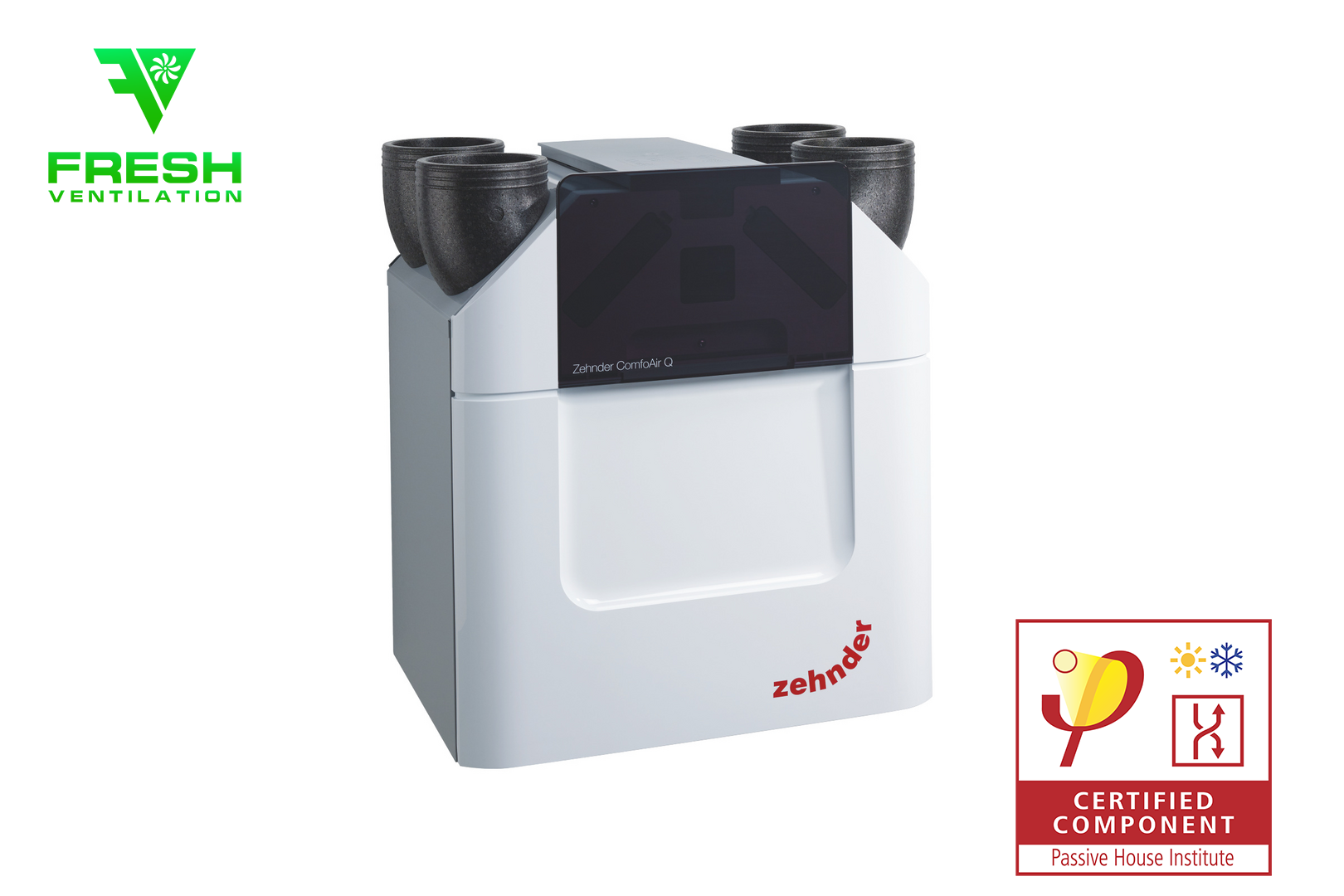
Balanced Pressure Heat/Energy Recovery Ventilation Systems for High Performance Homes (HRV/ERV)
Suggested Systems:
Key Features:
- Centralised whole home ventilation using 75mm (STIEBEL ELTRON) or 90mm (Zehnder) diameter uninsulated semi-rigid duct.
- Must be installed inside the thermal envelope.
- Usually impossible to retrofit.
- Balanced pressure with heat recovery using a counterflow HRV/ERV core.
- F7 synthetic filtration.
- Always ducted directly outside.
- HRV core works especially well in cold climates.
- ERV core available for hot and humid climates.
- All-in-one wall-mounted central ventilation unit houses 2 fans, 2 filters, and a heat recovery core.
- The heat exchanger reclaims energy produced by the exhausted stale air, and redistributes it into your home with up to 96% efficiency.
Ideal Installation:
- Passive House Certified homes.
- High performance homes.
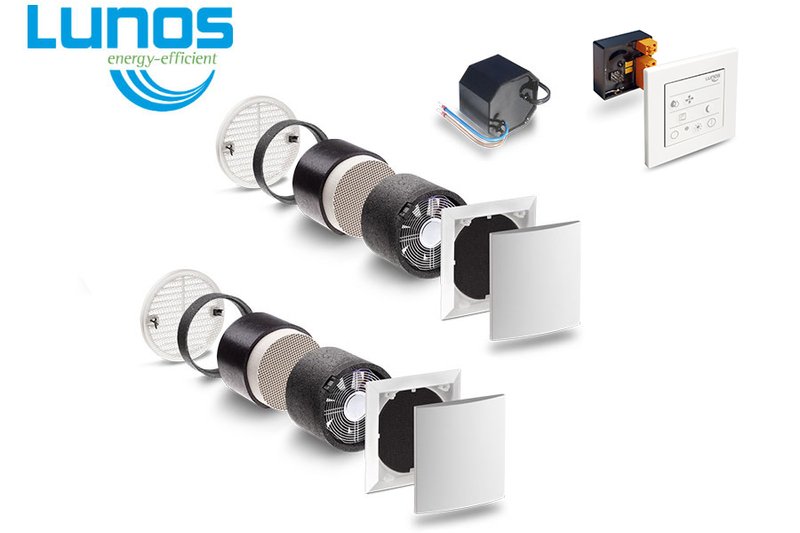
Decentralised Balanced Pressure Heat/Energy Recovery Ventilation Systems (HRV/ERV)
Suggested Systems:
Key Features:
- Decentralised ventilation using small localised ventilation products.
- Must be installed inside the home on an external wall.
- All-in-one units are easily retrofittable.
- Units installed in pairs require cabling between each unit and the central controller, so retrofitting can be more difficult (but not impossible).
- Balanced pressure with heat recovery using a counterflow enthalpy ERV core (LUNOS Nexxt-E).
- Balanced pressure with heat recovery (one direction at a time) using a ceramic core (LUNOS e²60 and STIEBEL ELTRON VLR 70 S).
- F7 synthetic filtration (LUNOS Nexxt-E).
- G3 synthetic filtration (LUNOS e²60 and STIEBEL ELTRON VLR 70 S).
- Installed through a hole in the wall to outside.
Ideal Installation:
- Apartments.
- Tiny homes.
- High performance homes (retrofit).
- Old and new homes where room-specific ventilation is needed.
Why Do We Need Home Ventilation?
Australian homeowners are increasingly keeping their windows closed due to noise, pollution and security. This reduces healthy natural ventilation and can increase the inhalation of harmful pollutants and respirable dust.
Modern homes are well insulated and sealed tight to increase energy efficiency, but are more likely to have poor ventilation because they cannot breathe. Opening doors and windows is not always practical and does not provide adequate ventilation, which needs movement and exchange of air.
Home ventilation systems offer a range of benefits:
Air filtration is a fantastic measure towards good respiratory health and is a useful tool in managing asthma and allergies.
The levels of particulate matter in modern, mostly urban air can be beyond overwhelming. For sufferers of asthma or allergies it can be even worse — sometimes deadly. Even if we are lucky enough not to have these afflictions, studies are beginning to show that particulate matter in ambient air-pollution is responsible for adult-onset asthma among other respiratory illnesses and afflictions.
A good ventilation system deals with all manner of particulate matter and can be helpful for asthma and allergy sufferers. Good filtration can prevent dust build-up on surfaces, improve air quality and reduce dust overall. In fact, a well-managed mechanical ventilation system will go some ways to preventing dust in your home altogether and a dust free home is better for everybody’s respiratory systems. Air quality is more than just dust however, filters cover and capture a large range of airborne particles; from dust, to pollen, to oil smoke particles. with a decent filter removing up to 95% pollen concentration from the air. That’s fantastic news for allergy sufferers. The constant circulation of fresh air coming into your home is bad news for airborne aerosol virus or bacteria particles as well, which are expelled as exhaust along with stale and dirty air. Combined with cleaning and vacuuming regularly, getting rid of carpets and items that can trap allergens — air filtration can help manage asthma triggers and can be part of a health consulted management plan.
Mould is bad for health — ventilation is your number one ally to fight and prevent mould growth.
Mould is a kind of fungus that thrives in unventilated and humid environments. Good ventilation is the arch nemesis of mould.
A combination of poor ventilation and excess moisture is the perfect breeding ground for mould. A broad range of moulds can end up growing in these conditions from more common Alternaria — often found in bathrooms, showers and under leaky sinks — to Penicillium — which contaminate textiles, including leather goods — and even Stachybotrys Chartarum or black mould.
While most varieties of mould aren’t great for human health, black mould or toxic black mould is particularly bad, producing a sometimes deadly or severely debilitating mycotoxin.
Good ventilation is the ultimate solution to prevent mould growth and keep a well ventilated, mould free atmosphere inside your home. A good ventilation system is your best weapon against mould growth, filtering out incoming mould spores, controlling humidity and temperature to create climate conditions that are not suitable for growth.
Ventilation can remove moisture from the air, help keep humidity down, the temperature more consistent and prevent condensation. Condensation in a dwelling can lead to mould.
Ventilation is a big part of keeping condensation under control in the home. Air generally contains water vapour as humidity.
Condensation usually talks about dew point. What is dew point? Dew point is the temperature that air needs to cool to to become saturated or to condensate. What does this mean for ventilation? When air cools through contact with a surface that is colder than the air, a surface at dew point, water will condense on the surface causing the home of mould — condensation. To avoid mould we avoid condensation. To prevent condensation, we need to keep the humidity of the air in our home down and try to keep surface and air temperatures approximately (give or take a few degrees) the same. A well ventilated space keeps a nice even humidity (and temperature), removes excess moisture from the air, which stops condensation and mould.
Human beings benefit from fresh oxygen rich air while we sleep.
A good night’s sleep is critical for learning, memory, mental health, metabolism, immune response and tissue repair. A fresh supply of oxygen is key to a good night’s sleep. Sleep is an often undervalued and all too costly part of human productivity and overall performance.
As building quality gets better, our homes are getting more airtight. Without the right filtration and ventilation system we see a gradual build-up of carbon dioxide (CO2) as we deplete the oxygen supply.
Carbon dioxide is colourless, odorless and tasteless. We often don’t notice its accumulation, and even a low build up can cause drowsiness. It is dangerous in high concentration.
Too much carbon dioxide while you sleep causes headaches and other ill effects when you wake up. Symptoms like those of sick building syndrome — common in poorly ventilated public or office environments — ill for no apparent reason, headache, shortness of breath or eye irritations. Symptoms that disappear quickly after departing the building or space. Sick building syndrome is bad news for work performance and is being recognised as a highly costly ‘hidden’ illness.
Sleep quality and carbon dioxide concentration has been an interest of health researchers for some time. Measured along with next day mental performance those in low carbon dioxide sleeping environments perform significantly better.
Carbon dioxide toxicity is no joke and an important consideration when deciding to install a filtration system. Often areas like bedrooms are overlooked as important areas for filtration and clean fresh air. Ventilation does a great job removing carbon dioxide from bedrooms and more importantly introducing oxygen rich fresh air to our bodies while we sleep. An oxygen rich sleep leads to a better next day, cognitive performance and productivity, especially in schools or offices.
Musty odours, caused by dampness and poor ventilation in your home, are pretty off-putting and not particularly healthy.
Getting clean, fresh air in regularly through your home with proper ventilation will help greatly with lingering smells, flushing out the stale, contaminated air along with any musty odours.
A warm and dry home is much easier to heat and will heat up much faster than a cold, damp home.
As the sun sets, the air outside your home cools rapidly. Generally, this is also when your windows are closed to prevent pests from entering, but unfortunately it also traps heat indoors.
